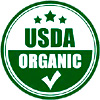Botanical Name: Curcumin Herb
Family Name: Zingiberaceae
Common Name: Turmeric, Curcuma, India Saffron, Curcumin
Part used: Plant fingers, leaves, flowers and roots
Uses
Curcumin is the active ingredient in turmeric and is orange yellow in colour. It has a spicy taste and aroma. It is used as a medicine and as a natural food colour in India. It has anti-inflammatory, anti-arthritic, anti-allergic, anti-bacterial and anti-tumour properties. Curcumin 95 is useful in a variety of conditions related to inflammation and antioxidant damage, such as cataracts, arthritis, cancer, and heart disease. It is also useful in treating scabies, digestive disorders, promoting wound healing and strengthening the immune system.
Countries where it is found: Curcumin is found in India and other Asian countries.
Harvest Information
The plant grows to about a meter in height and is widely used in food and medicine for thousands of years in South Asia. India is the largest producer of turmeric and has around 100000 acres of land under cultivation and the country produces about 100000 tons per season. The plant grows in hot, tropical climate with light soil. It is a hardy plant and the yield depends mainly on the soil it is grown and the climatic conditions. The curcumin content changes according to place, farming technique and climate.
 History of Plant
History of Plant
The plant was cultivated first as a dye and later on valued as a condiment and for cosmetic purposes. The mention of this spice is there in the 13th century article of Marco Polo. It is considered as an auspicious material in the sub-continent both in the north and south regions. The spice has a long history of use as medicine in South Asia and is mentioned in many of the Sanskrit medical books. It is part of Ayurveda and Unani medicines.
Extraction Process: Extracted by solvent extraction of turmeric
Commonly Known Benefits
Curcumin 95 is an effective antioxidant and is said to be the most active and soothing portion of turmeric. It has anti-platelet, cholesterol lowering and anti-fungal properties and it contains powerful antioxidants phytonutrients like curcuminoids. It can control cancer at the beginning stages and promotion and progression of tumour development. It supports colon health, and helps to maintain healthy cardiovascular systems. It is used as natural colouring source in pharmacy, confectionery, cosmetic and food industries. Curcumin 95 is also a key ingredient in cosmetic products like soaps, cleansers and creams. It is used for the treatment of inflammatory disorders, metabolic disorders, rheumatoid, depression, Alzheimer "s disease, liver problems and gastric disorders. This does not cause any major side effects but some people may experience stomach upset, dizziness, diarrhoea or nausea. During pregnancy and breast feeding time this can be taken provided it is in limited amount. People with gall bladder problems, gallstones or bile duct obstruction, should avoid turmeric. Turmeric is good for blood clotting and curcumin might decrease the blood sugar in diabetic patients.





